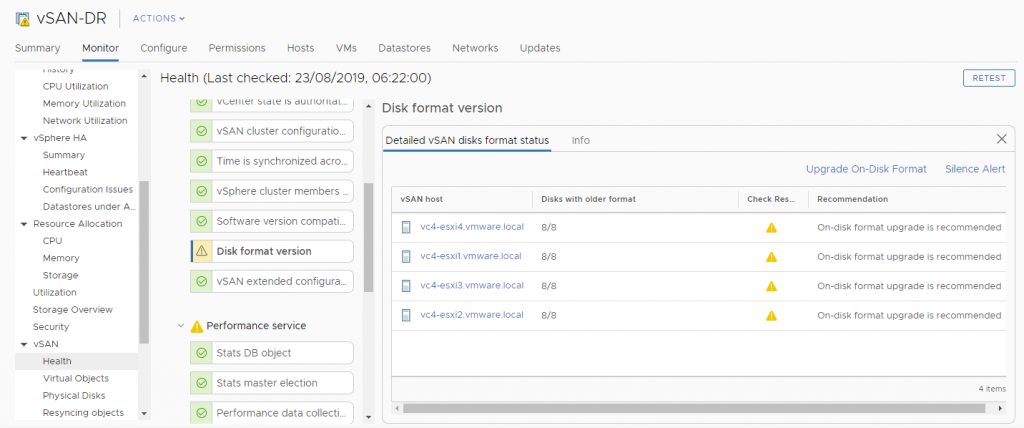
- VMWARE ESXI 6.7 UPGRADE PATH UPDATE
- VMWARE ESXI 6.7 UPGRADE PATH FULL
- VMWARE ESXI 6.7 UPGRADE PATH PSP
VMWARE ESXI 6.7 UPGRADE PATH PSP
In ESXi 6.7 U1, there is a new latency-based option for the round robin PSP (path selection policy).

So they introduced a new dynamic and adaptive latency-based policy. VMware saw this, and started working on a new policy. With the burgeoning support for NVMe-oF, even lower latency is possible. With the introduction of all-flash-arrays, latency become more and more a centerpiece of the conversation. In these situations, somewhat ironically, if ESXi used less paths, the performance would improve. As long as it was “online” it was a valid and active path. 5 ms on the other, it would see and use each path equally. If the latency on one path was 100 ms and. The issue here is that round robin only stopped using a path when it was dead. Generally, this meant the latency down the bad path was bad, the latency on the good paths was, well, good.

In other words, I/Os sent down the misbehaving paths experienced worse performance than I/Os sent down healthy paths. could cause one or more of the available paths to not go offline, but behave erratically. Not all paths are created equal, or more importantly, stay equal.įailures, congestion, degradation, etc. With that all being said, it still wasnt quite good enough. Almost every storage vendor who offers active/active paths made this recommendation too. But nonetheless the other benefits caused this change to generally be recommended. This made it much easier to identify when something was configured wrong (not fully zoned etc).Ī third argument was performance, but frankly there isn’t a lot of strong evidence for that. When this was set low, the I/O balance on the array (and from a host) was usually almost perfectly balanced across the paths. When a path failed due to some physical failure along that path (switch, HBA, port, cable, etc) ESXi would fail that path much more quickly leading to less disruption in performance during the failure The reason we (Pure) recommended the change down to switching paths after every single I/O was for two many reasons: By changing what was called the I/O Operations Limit (sometimes called the IOPS value) you could realize a few additional benefits. The other option was to change paths after a certain amount of throughput, but frankly, very few went down that route.Ī popular option for tuning RR, was to increase the path switching frequency. So for a given device it would use one path for 1,000 I/Os, then the 1,001st I/O would go down a different path. The default configuration of RR was to switch logical paths every 1,000 I/Os for a given device.
VMWARE ESXI 6.7 UPGRADE PATH FULL
Round Robin was a great way to leverage the full performance of your array by actively using all of the paths simultaneously. This is VMware’s built-in path selection policy for arrays that offer multiple paths. Why was this PSP option introduced? Well the most common path selection policy is the NMP Round Robin. So what is it? Well first off, see the official words from my colleague Jason Massae at VMware here:

VMWARE ESXI 6.7 UPGRADE PATH UPDATE
In reality, this option was introduced in the initial release of 6.7, but it was not officially supported until update 1. This is my first (but certainly not last post) on the new path selection policy option in vSphere 6.7 Update 1.


 0 kommentar(er)
0 kommentar(er)
